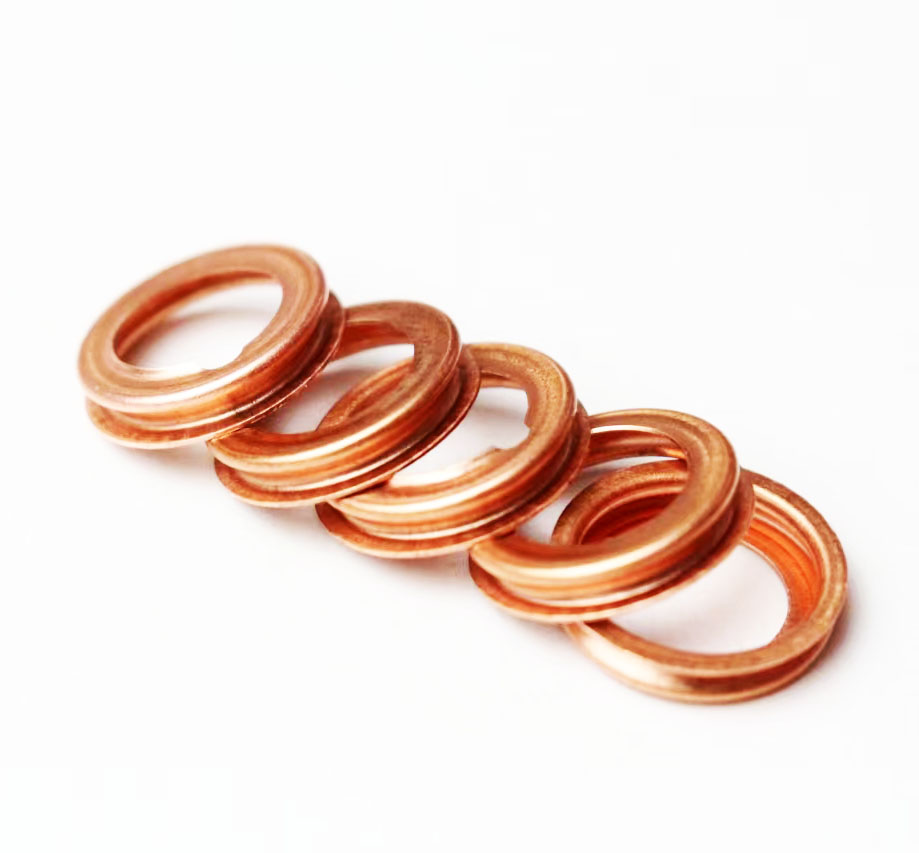oil pan bolt gasket
Understanding Oil Pan Bolt Gaskets Importance, Types, and Installation Tips
The oil pan serves a critical role in the automotive engine system by holding the engine oil, which lubricates various engine components during operation. One crucial component of the oil pan assembly that often goes unnoticed is the oil pan bolt gasket. This small but significant part ensures a tight seal between the oil pan and the engine, preventing leaks and maintaining optimal oil pressure. Understanding the significance of oil pan bolt gaskets, their types, and proper installation can enhance engine performance and longevity.
Importance of Oil Pan Bolt Gaskets
Oil pan bolt gaskets are designed to create a seal that prevents oil from leaking out of the oil pan. These leaks can lead to various problems, including insufficient lubrication, overheating, and catastrophic engine failure. A compromised seal may also result in contamination of the engine oil, which can impair its ability to lubricate and protect engine components effectively. By keeping the oil contained within the pan, gaskets help maintain the correct oil level and ensure that the oil pump can deliver oil efficiently throughout the engine.
Types of Oil Pan Bolt Gaskets
1. Rubber Gaskets Rubber gaskets are among the most common types used for oil pans. They are flexible, easy to install, and can provide excellent sealing capabilities. However, they may degrade over time due to exposure to heat and oil, requiring periodic replacement.
2. Cork Gaskets Cork gaskets have traditionally been used in older engines due to their availability and ease of installation. However, they are less common in modern vehicles because they are more prone to compression and can eventually become brittle. To improve their durability, manufacturers often impregnate them with oil-resistant compounds.
3. Silicone Gaskets Silicone gaskets are gaining popularity due to their superior flexibility and resistance to heat and oil degradation. They can create a reliable seal, even in high-temperature environments. Additionally, silicone provides the benefit of being less susceptible to wear, making it a longer-lasting option.
4. Paper Gaskets Paper gaskets are often used in specific applications, especially in older models. While they are inexpensive and easy to use, they may not offer the same durability and sealing capability as rubber or silicone alternatives. Proper installation and care can help maximize their effectiveness.
5. Metal Gaskets These gaskets, often used in high-performance applications, offer excellent durability and resistance to extreme temperatures. Metal gaskets can also endure high torque applications, making them suitable for racing engines and heavy machinery.
oil pan bolt gasket

Installation Tips for Oil Pan Bolt Gaskets
Proper installation of an oil pan bolt gasket is essential to ensure a reliable seal. Here are some tips to consider
1. Preparation Before installation, clean both the oil pan and the engine block surfaces thoroughly. Use a gasket scraper or a soft cloth to remove any residual gasket material, dirt, or oil. A clean surface ensures better adhesion and sealing.
2. Choosing the Right Gasket Ensure that you select the appropriate gasket type for your specific vehicle make and model. Review the manufacturer specifications to select a gasket that meets the required standards.
3. Use Gasket Sealant In some cases, applying a thin layer of gasket sealant can improve sealing capabilities, especially around corners or irregular surfaces. However, use it sparingly, as excessive sealant can disrupt the gasket's sealing properties.
4. Torque Specifications Follow the manufacturer's torque specifications when tightening the bolts. Over-tightening can lead to gasket compression and failure, while under-tightening can cause leaks. It's advisable to use a torque wrench for precision.
5. Sequential Tightening Tighten the bolts in a crisscross pattern to ensure even pressure distribution across the gasket. This technique helps prevent distortion and guarantees a proper seal.
Conclusion
The oil pan bolt gasket is a small yet essential component of an engine's lubrication system. By preventing oil leaks, it plays a vital role in maintaining engine health and performance. Understanding the different types of gaskets available and following proper installation techniques can help vehicle owners prevent costly repairs and extend the life of their engines. Regular maintenance and inspection of the oil pan and gasket should be part of every car owner's routine, ensuring that they keep their engines running smoothly for years to come.
-
Oil Drain Plug Washer Reusable Types
News Aug.22,2025
-
Oil Drain Plug Replacement Guide
News Aug.22,2025
-
Heavy Duty Seal Waterproof Features
News Aug.22,2025
-
Engine Oil Seals Installation Guide
News Aug.22,2025
-
Seal Oil for Sale High Temperature Grade
News Aug.22,2025
-
Cassette Seal Compact Design
News Aug.22,2025
-
Simplifying Oil Changes: A Comprehensive Guide to Oil Drain Plugs and Their Variants
News Aug.04,2025
Products categories















